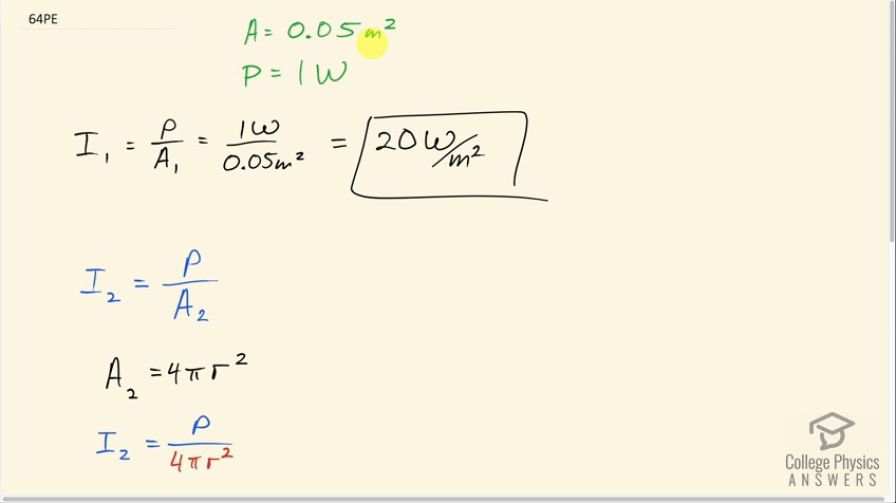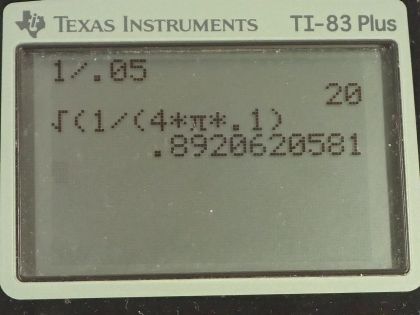Question
The low-frequency speaker of a stereo set has a surface area of and produces 1W of acoustical power. What is the intensity at the speaker? If the speaker projects sound uniformly in all directions, at what distance from the speaker is the intensity ?
Final Answer
The distance at which the sound intensity will be is
Solution video
OpenStax College Physics for AP® Courses, Chapter 16, Problem 64 (Problems & Exercises)

vote with a rating of
votes with an average rating of
.
Calculator Screenshots
Video Transcript
This is College Physics Answers with Shaun Dychko. A speaker emits power of 1 watt and it has an area of 0.05 square meters and the question is what is the intensity of the speaker right beside it? So that's gonna be its power divided by the area over which the power is distributed so that's 1 watt over 0.05 square meters and that's 20 watts per square meter. And the second part of the question asks what is the distance at which the intensity would be... intensity 2 is 0.01 watts per square meter? And so we have the power divided by the area in the second case and this area in the second case will be a sphere which we assume that this speaker is emitting its sound with an even distribution all around it which is not really true because speakers project sound forwards but we just have to make an assumption that will allow us to solve the problem. So we are gonna assume that the power is distributed evenly around this spherical shell which has an area of 4π times its radius squared and so it's the radius of this shell that we are trying to find. So we substitute 4πr squared in place of the area and then do some algebra to solve for r; we'll multiply both sides by r squared and divide both sides by I 2 and we have r squared is power divided by 4π times I 2 and then we take the square root of both sides and we get the radius then is square roof of the power times 4πI 2. So that's 1 watt divided by 4π times 0.1 watts per square meter all square rooted which is 0.9 meters.
